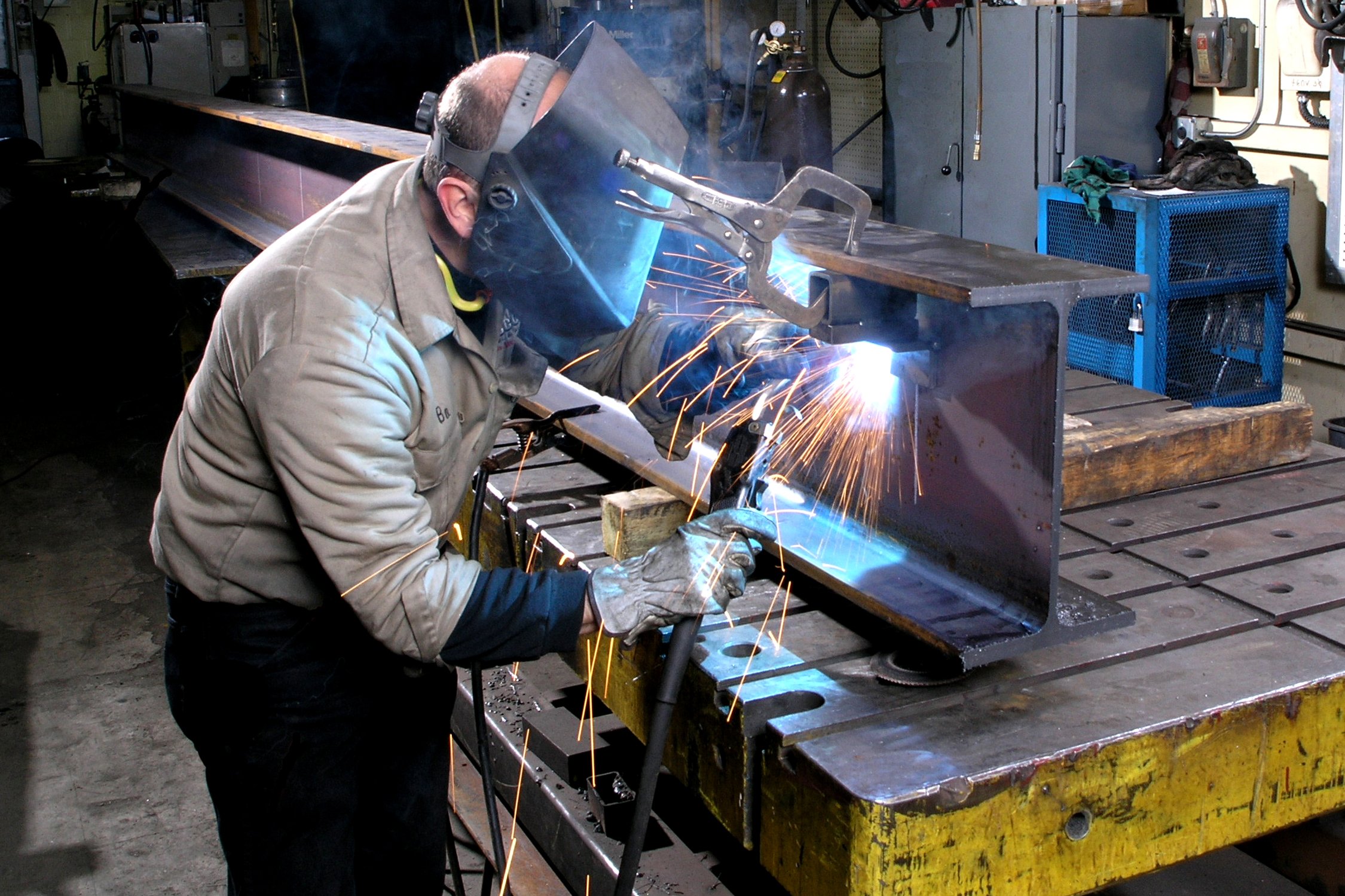Modified “5-55” Vertical-Up Welding Technique Improves Bead Quality and Weld Shape
When welding with an E71T-8 electrode in structural steel fabrication and erection, here is a technique that combines the two competing priorities of being able to pause long enough at the toes to flatten out the weld and bring slag to the surface, and having a small enough weave angle in order to avoid “perforations” and inconsistent leg size.
Posted: March 14, 2012
Innershield® NR-232 is a semiautomatic, self-shielded flux-cored tubular electrode designed for all-position welding of 3/16 in and thicker carbon steel. NR-232 is a common choice in the structural steel fabrication and erection industry – especially structures intended for use in seismic zones – due to the robust impact properties of its weld deposit. When the recommended procedures are used, NR-232 meets the minimum strength and impact property requirements for a deposit with an AWS E71T-8 classification.
This wire generates what is considered to be a fast-freezing slag due to its acidic oxide flux system, allowing for relatively high travel speeds (upwards of 6.5 lb per hour) when depositing out-of-position welds. The slag removal is generally easy, and quite often, the slag actually can be self-peeling.
Because Innershield® NR-232 is available in three different sizes – .068 in, .072 in and 5/64 in diameters – it’s really not practical to list all of the possible procedure combinations here. By procedure combinations, I’m referring to the infinite number of possible wire feed speed/voltage settings at which an acceptable weld can be obtained. For more information on the “universe” of the possible NR-232 procedures, I encourage you to visit our website. Once there, click on the “Consumables” tab and check out the information on NR-232 under “Self-Shielded – Mild Steel, All Position.”
But for starting point procedures, I recommend you visit a different page on our website. Under the “Support” tab, select “Certificate Center” and then go to “AWS D1.8 Certificates.” Here you will find the procedures that were used to conduct high heat input weld testing in the 3G vertical-up welding position. These procedures were not selected by accident, but rather they are considered to be the optimum settings at which the electrode operates.
Now that procedure settings for vertical-up welding with Innershield® NR-232 have been addressed, we can delve into a discussion of “how the rubber meets the road”, i.e., welding technique.
There is a well-known axiom in welding advising that you should always “keep your eye on the puddle.” In the case of Innershield® NR-232, your focus should specifically be on keeping the electrode just above middle of the exposed puddle. Losing your focus – even for one second – can lead you to travel too slowly and strike the slag shelf.
I liken the process of staying in the middle of the weld pool to driving a car in a snowstorm. If you’re only looking at the end of the hood of your car (the welding arc), then you’ll probably wind up in an accident. However, if you keep your eyes “down the road” (on the slag shelf and at the toes of the weld), you will be able to make the subtle movements necessary to keep out of trouble (for instance, when the slag shelf all-of-a-sudden creeps up on you).
You’ll find that most manufacturers of E71T-8, such as Innershield® NR-232 electrodes, will not disagree with this assessment. However, you will rarely see much more than this in-print on the subject. For the remainder of this article, I will share the knowledge that I have accumulated over the course of ten years of working with this product.
When welding with NR-232, the rate at which you progress or “step up” the plate vertically should be dictated by that slag shelf. The primary function of the slag shelf is to hold the weld metal in the joint against gravity. So while the slag shelf is acting as your friend, it can simultaneously act as your enemy if you are not extremely careful.
If the electrode strikes the weld puddle, trapped slag can result. Or, if the overall rate of upward travel speed is way too slow, the puddle turbulence created will cause the weld pool to spill out. When this happens, welding must obviously stop, and the weld will need to be repaired before the arc can be re-struck. On the other hand, travelling too slow can also result in problems. Don’t move so fast as to “out-run” the puddle. This could result in a weld bead showing discontinuities and/or an inconsistent leg size. Or, worse, the electrode can gouge into the plate and just make a flat out mess.
Let’s say that you do manage to stumble upon the correct travel speed and somehow avoid making a mess. If your technique or electrode motion is not correct, less than desirable results should be expected. For instance, some will claim that when welding with an E71T-8 electrode you should weld with a stringer technique – that is, no weave at all. These same individuals will say that to flatten out the weld bead perhaps a little bit of a wiggle or “beer shake” (the shakes resulting from drinking too much beer the night before).
From my experience, utilizing little or no weave motion usually results in a highly convex or ropey bead with undercut at the sides of the weld. So one of the lessons that I have learned was that I should save the beer shakes for another time and stick with a side-to-side weave motion. But what type of side-to-side weave motion should you use?


















